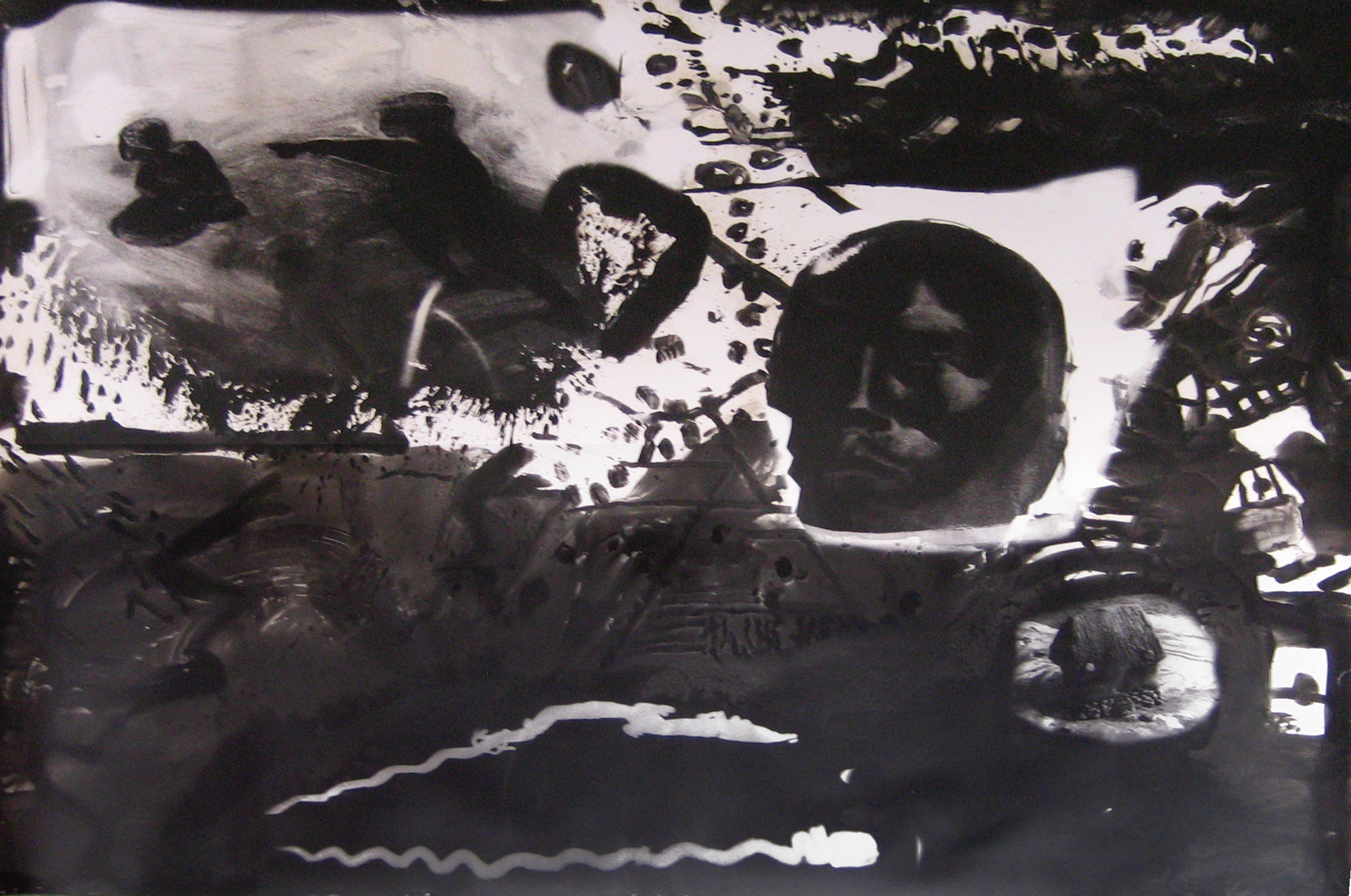Fotografía en gelatina de plata revelada parcialmente
132 x 187 cm
1992
Caloto es una pieza que viene también de una experiencia personal. En uno de los talleres que dirigí en Cali tuve una alumna con interés por el esoterismo, los avistamientos extraterrestres y el magnetismo de ciertos lugares. Nunca cuestioné su pensamiento. Basó su tesis en estos temas y presentó un trabajo muy interesante en pintura. Dos años después regresé a hacer otro trabajo en la Escuela de Arte y cuando pregunté por ella me dijeron que la habían asesinado. Es una historia triste: ella consiguió un terreno en Caloto (Cauca), a una hora de Cali, porque allí, según ella, se cruzaban sus coordenadas; construyó una casa y se trasladó con su esposo e hijos. Cerca de allí, en una finca de narcotraficantes, un grupo indígena invadió parte del terreno baldío para asentarse. Ella apoyó la acción de aquellos desposeídos, los estimuló a construir sus refugios y llegó a ser su líder. Una noche, mientras su familia asistía a cine en Cali, asesinos paramilitares entraron a su casa y la mataron a machetazos. Yo quedé muy impresionado. Escribí el nombre Caloto en un papel, pues me pareció que su personalidad, su sensibilidad social y su muerte violenta la podrían ubicar en un sitio heroico y que alguien en la literatura o el cine podría hacer algo con su sacrificio. No pensé de momento hacerlo a través de mi obra, pero poco tiempo después, no sé, a los dos o tres meses, el país se estremeció con la masacre de Caloto, en la que aniquilaron salvajemente a más de veinte indígenas, los mismos por los que la mujer había muerto. Entonces no pude negarme a hacer una obra que de alguna manera testimoniara el hecho.
Miguel Ángel Rojas en entrevista con José Roca, Objetivo Subjetivo (2007).
Caloto, 1992
Partially developed silver gelatin photograph
52 x 74 in.
1992
Caloto is a piece that derives from personal experience. At a workshop I conducted in Cali, I had one student interested in esoterism, extraterrestrial sightings, and the magnetism of certain places. I never questioned her thinking. She based her thesis on those subjects and presented a very interesting painting project. Two years later, I returned to do another job at the Art School, and when I asked about her, they told me she had been murdered. It’s a sad story: she purchased some land in Caloto (Cauca), nearness from Cali, because she believed that her coordinates intersected there. She built a house and moved there with her husband and children. Nearby, on a property controlled by drug traffickers, an indigenous group invaded part of the uncultivated terrain to create a settlement. She supported the action of those dispossessed people, encouraging them to build their shelters and eventually became their leader. One night, while her family was at the cinema in Cali, paramilitary assassins entered her house and killed her with machetes. I was deeply affected. I wrote the name Caloto on a piece of paper, because I felt that her personality, social awareness, and violent death could lend her a heroic status and that someone in literature or cinema could do something with her sacrifice. At the time, I wasn’t thinking of doing it through my own work, but shortly thereafter, perhaps two or three months later, the whole country was shaken by the Caloto massacre, during which over twenty indigenous people were savagely killed, the same ones that the women had died for. I could no longer deny the need to create a work that would in some way bear witness to the events.
Miguel Ángel Rojas interviewed by José Roca, Objetivo subjetivo (2007)
Translated by Michelle Suderman
